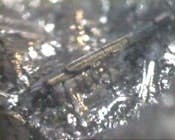When lead was discovered in the drinking water of thousands of Washington D.C. homes last summer, some say the U.S. Environmental Protection Agency (EPA) did not react sufficiently, the Washington Post reported.
EPA regulators signed off when the D.C. Water and Sewer Authority (WASA) ignored an EPA guideline that recommends holding a news conference and instead chose to inform customers with a vague brochure. The agency also approved WASA's plan to use a regulatory loophole and replace 385 lead service lines of the 1,600 that were supposed to be removed, the Post reported.
Federal and D.C. government leaders have been growing increasingly upset with EPA's failure to hold WASA accountable to the public.
"How could the EPA sign off on the notice [WASA] had given?" Del. Eleanor Holmes Norton (D-D.C.) asked the Post. "I do not believe that we can leave WASA in the hands of the EPA without getting to the bottom of how the EPA does business."
The government leaders say they will act if EPA does not.
Last week, Rep. Thomas M. Davis III (R-Va.), chairman of the House Committee on Government Reform, which oversees the District, said he intends to hold a congressional hearing in early March to investigate the performance of the EPA, as well as the Army Corps of Engineers, which operates the Washington Aqueduct, the Post reported.
But effective oversight of the lead problem could be difficult to address because laws governing lead in drinking water are vague, ineffective and filled with regulatory loopholes, some federal leaders say.
acknowledged that his staff could have done more to force WASA to better inform the public of the lead contamination. He suggested that his staff was more concerned about making sure that WASA met technical compliance regulations.
Of the 6,118 tests WASA conducted last summer, more than 4,000 homes were found to have water with lead levels above the federal limit, 15 parts per billion. About 157 homes had water with lead levels of more than 300 parts per billion, levels that are rare, according to experts, the Post reported.
Local leaders say that regardless of what WASA did to inform those affected, the agency should have alerted the public to the potential health risks. Donald S. Welsh, head of the EPA's mid-Atlantic branch in Philadelphia, responded by saying that the agency was focused on making sure that WASA met technical compliance regulations but that EPA will look into making sure the public is better informed in the future.
Source: The Washington Post


